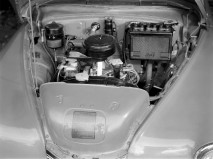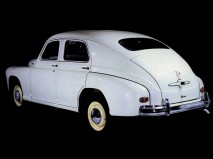1950 GAZ M-20 Pobeda
The Pobeda was the first Soviet automobile to have turn signals, two electric wipers, an electric heater, and a built-in AM radio. The car came to be a symbol of postwar Soviet life and is today a popular collector's item.
Production was difficult; by the end of 1946, only twenty-three cars were completed, virtually by hand. The improved Pobeda was placed in production 1 November 1949, and the techniques needed to develop and manufacture it effectively created the Soviet automobile industry. In 1952, improved airflow in the engine increased power from 50 hp (37 kW; 51 PS) to 52 hp (39 kW; 53 PS); it climbed to 55 hp (41 kW; 56 PS), along with the new grille, upholstery, steering wheel, radio, and radiator badge, as the M20V (Russian: М-20В), 1955. Weighing 1,460 kg (3,219 lb), the Pobeda has 2.1 litre sidevalve straight-4 engine producing 50 hp (37 kW) and top speed of 105 km/h (65 mph).
Total production of the Pobeda was 235,999, including 37,492 taxis and 14,222 cabriolets. The Pobeda was replaced by the GAZ M21 Volga.

















